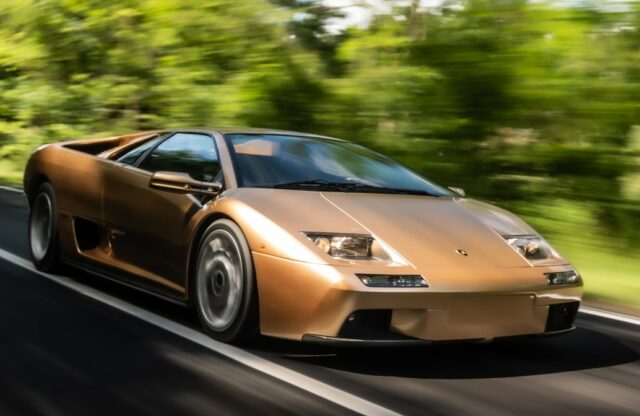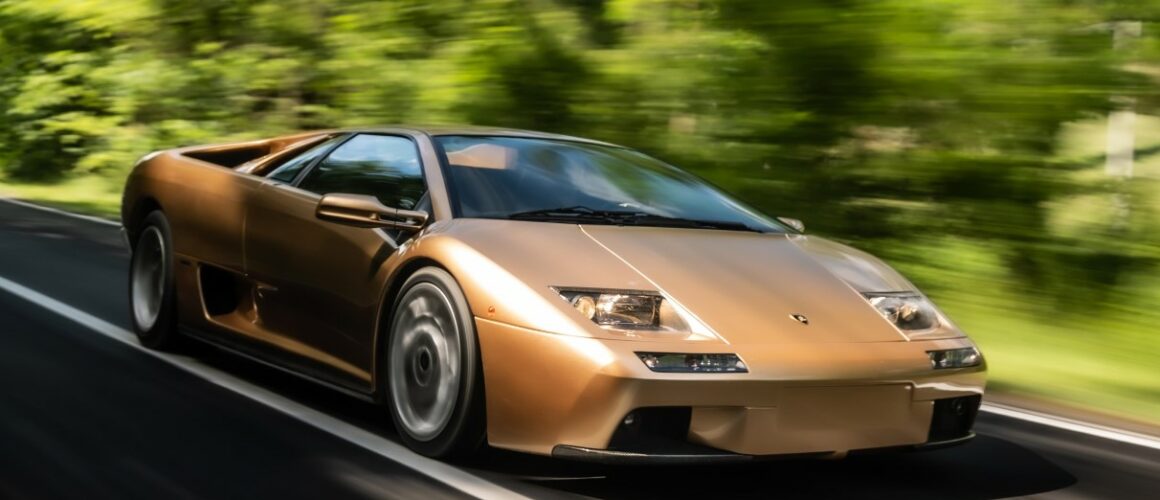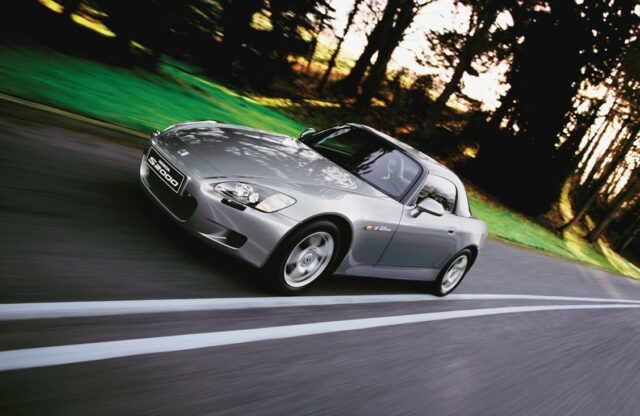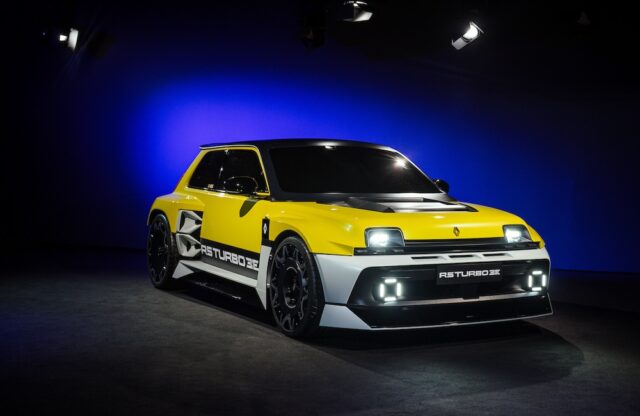WORDS: JOHN TALLODI | PHOTOS: LAMBORGHINI/WIKIMEDIA COMMONS
Thirty-four years. It’s hard to believe how much time has passed since the Lamborghini Diablo arrived in 1990. Even in 2024, this supercar still has serious presence, not to mention pace that puts it up there with some of the very best modern machinery.
The replacement for the iconic Countach began its journey just five years earlier, in 1985. The Chrysler style centre further refined Marcello Gandini’s initial design, when that auto giant became Lamborghini’s major shareholder in 1987.
At launch, the Diablo was the fastest production car in the world, capable of 203.1mph from a fully reworked 485bhp 5.7-litre Bizzarrini- designed V12. Rally champ Sandro Munari was employed to help with handling development, and while the model was undoubtedly capable in the right hands, it still very much demanded a driver’s respect, in true Lamborghini supercar tradition.

Having spent the past few decades in the shadow of the Countach, the Diablo has seen a rise in values across the board in recent years

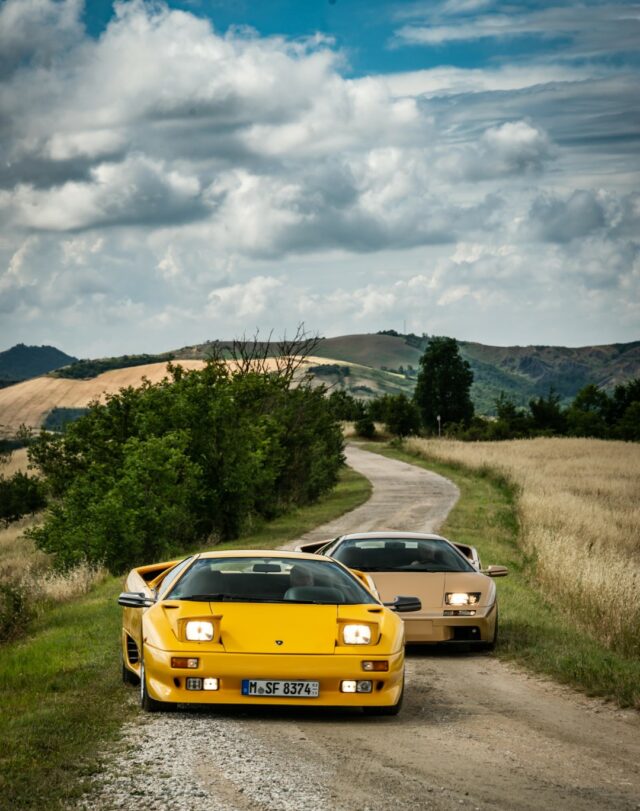
This was especially true of the earlier versions, which had rear- wheel drive and no power steering or electronic driver aids, not even ABS. Changes in Lamborghini’s ownership and the need to cater to a broader audience meant future variants became less analogue, as refinements such as electronically adjustable dampers, all-wheel drive and traction-control systems arrived.
The Diablo was also produced during a tumultuous period in the raging bull’s history. As Lamborghini consultant Massimo Delbò points out, the model survived four changes of corporate ownership over the course of its life, from design study to end of production.
This also makes it unique when thinking about ownership, because there’s a marked difference between the very first and last cars manufactured, in both looks and, to an extent, the driving experience, too. After 11 years in production the total tally stood at 2903 examples – well beyond the Countach’s final figures and a testament to the popularity of this rather special supercar.

THE VALUE PROPOSITION
Having spent the past few decades in the shadow of the Countach, the Diablo has seen a rise in values across the board in recent years. Francesco Stevanin, co- ordinator at Lamborghini’s classic department, Polo Storico, feels that this is due to increased interest from both traditional and younger collectors. ‘Traditional’ refers to long-time classic aficionados who see the Diablo as a valuable part of the marque’s history and look for pristine examples to join their fleets.
The younger group are now in a financial position to make their childhood bedroom posters come alive, and they tend to more readily take advantage of these visceral models’ dynamic abilities. This trend should see a move upwards for both ‘standard’ and limited-edition cars – but, as with any modern classic, condition, mileage and originality all play a strong role in the final values.
Francesco points out that Polo Storico also plays a big part in influencing classic Lamborghini values. Aside from providing original spare parts and restoration services, the centre offers a certification service, too.
“This entails a full car inspection with a specific focus on authenticity and originality,” he explains. To determine authenticity, several mechanical tests are carried out, including a short drive. If the model has never been driven, it cannot be certified. The originality assessment also checks to see if the car conforms to the original tech spec; some updates are deemed acceptable if original period parts were fitted. If not, owners are given the opportunity to return the model to original status, or else receive a certification with these specific nonconformities listed.
Owners are then given a complete photographic book, with a technical description of the car’s features and copies of the original documents from the Lamborghini archives. The certification process can add up to 15 percent to the value. While only Polo Storico can carry out the process, external dealers will soon offer pre-certification authorisation that can alert owners to any changes required before they send the car to Sant’Agata.
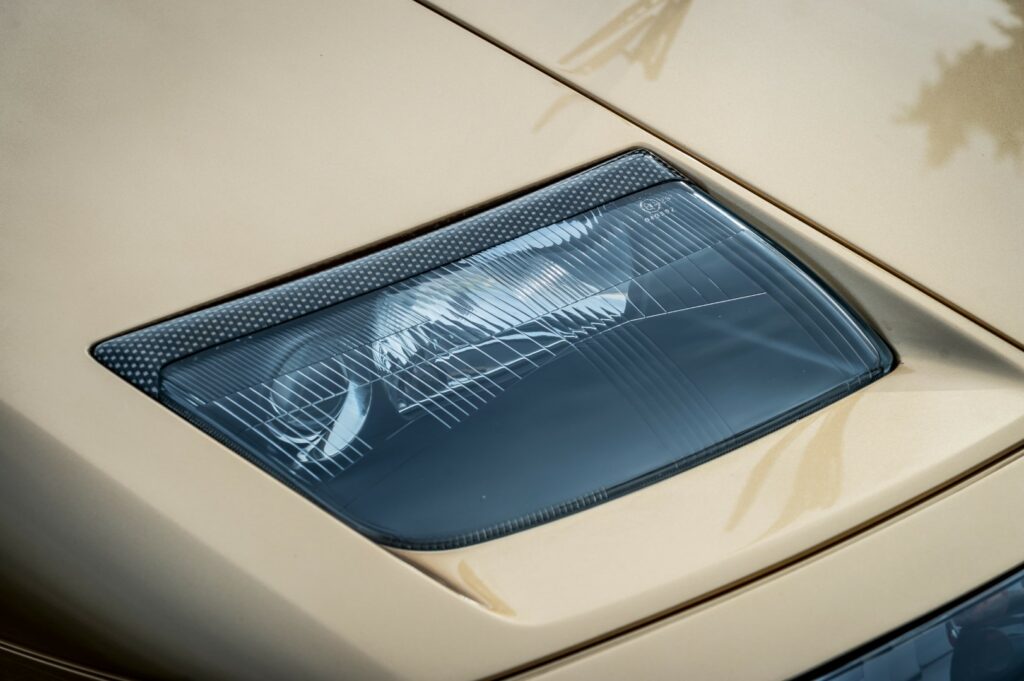
THE DESIRABILITY FACTOR
As a rule of thumb, special-edition and low-volume classics tend to get the most attention. Yet once enough time passes, the earliest models get their time in the sun as well. This is definitely true of the Countach, whose early LP400 and LP400S guises are possibly the most desirable.
“For the Diablo, it’s the very first batch of 1990s cars that fit this bill,” says Francesco. “They are the purest example of what the Diablo was initially meant to be.” While that’s certainly true of the smooth bodywork – the lack of wings and additional air intakes really highlights the original design – the mechanicals, too, are untethered by electronic nannies of any kind.
Compared with later variants they offer a lot of value, with good ones starting at £160,000, while the combination of traditional RWD and no driver aids adds to the immersive experience. If you’re looking for an appreciating modern classic, a low- mileage Series 1 is a good bet.
The VT (Viscous Traction) arrived in 1993, as the first Lamborghini sports car with all-wheel drive. A number of its updates were also implemented on the standard cars. To celebrate 30 years of the marque, the highly desirable limited-edition 523bhp SE30 was introduced. The RWD SV with an adjustable rear wing and 510bhp came in 1995, and you can find these for £180,000- £250,000. The AWD VT Roadster was also introduced; these as well as subsequent open-roof variants tend to trade at a slight premium compared with the hard-tops.
Audi AG’s purchase of the brand in 1998 marked the end of the Series 1 cars and the dawn of a new era, because the company gained access to a wealth of additional resources and technologies. The first fruits of this change were seen when the SV, VT and VT Roadster all received comprehensive updates by Luc Donckerwolke, Lamborghini’s first-ever in-house designer. The interior was thoroughly reworked, and beneath the restyled bodywork the engine now had variable valve timing. ABS (another first for Lamborghini) was also incorporated.
Visually, the biggest difference was the replacement of the pop-up headlamps with fixed units. Of these Series 2 cars, the run-out 6.0-litre GT and VT are highly prized; with just 83 units being made, the particularly rare GT can sell for £300,000-plus.

THE NUTS AND BOLTS
Having built up its parts catalogue and supplier network, Polo Storico now offers more than 65 percent of components across the model range. Owners can order directly through any authorised dealer, or they can send their cars to Polo Storico for a comprehensive restoration.
“The process is managed by current and retired employees who worked on these classics when they were still in production,” says Francesco. “Our philosophy is to keep improving our internal workshop. Aside from the paint, everything is done in-house.”
In terms of maintenance, the Diablo is far less temperamental than most exotica. A service is needed every year, or 6750 miles, and engine mounts should be periodically checked, too.
While the manual transmission is robust, clutch actuation on early cars can be very heavy and slave cylinders are known to fail. Later clutches have easier modulation, but don’t expect to get much more than 18,000 miles out of one due to the prodigious torque.
Check suspension bushes and dampers for the usual wear and tear. With the VT came active suspension, and a nose-lifting system was offered soon after. Upgraded brakes (1995-on) boosted fade resistance.
The cabin got some big changes, too. All cars had air-conditioning, plus electric windows and seats, from the start, while the early models had a more traditional dash with a separate instrument cluster.
Series 2s received a new cluster, wheel and centre console, plus some trim changes. A handful had the optional c.£10,000 Breguet clock; bespoke luggage was slightly more common. Climate control and overall material quality were much improved. Whether you’re looking for a pristine garage queen or plan to regularly use your Diablo, the relatively large number built and their inherent reliability mean either is possible.
Early cars offer an unadulterated drive that makes them that bit more special, and a well kept pre-1993 Diablo can be a great long-term investment. The updated AWD models with active suspension are no less visceral, but do offer more grip.
Series 2, Audi-era cars have a bit more polish. To some that’s a shame, but the Diablo’s unruly nature still dominates the drive. The aggressive RWD 575bhp 6.0-litre GT remains one of the most intense variants.
When it comes to the final decision, as long as the car has a verifiable service history – preferably Polo Storico certification – and puts a big smile on your face after a drive, then you’re unlikely to go wrong.
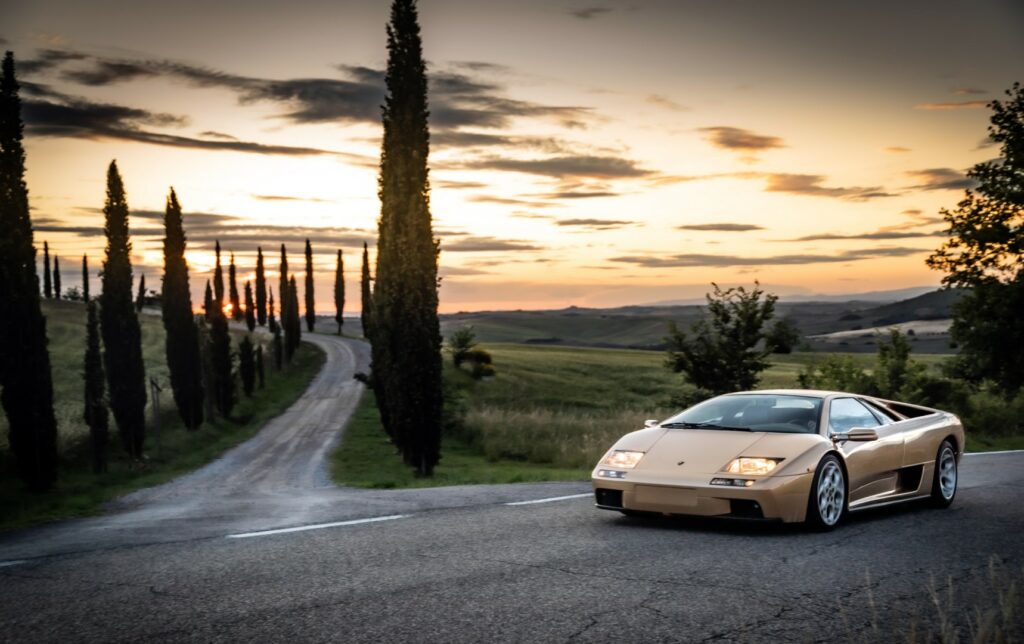
THE DETAILS
1990-2001 LAMBORGHINI DIABLO
5.5-LITRE V12:
POWER: 485-529BHP
TOP SPEED: 203MPH
0-60MPH: 4.5 SECONDS
6.0-LITRE V12:
POWER: 550-575BHP
TOP SPEED: 210MPH
0-60MPH: 3.9 SECONDS
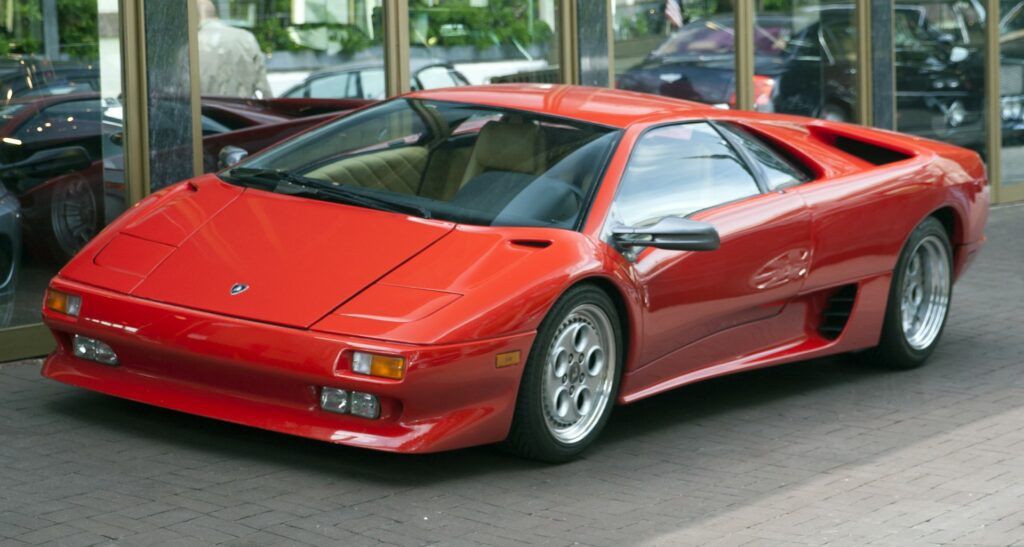
PRICING (US)
1991 5.5-LITRE V12:
FAIR: $127,000
GOOD: $198,000
EXCELLENT: $258,000
CONCOURS: $337,000
2001 VT 6.0-LITRE V12 SE:
FAIR: $296,000
GOOD: $436,000
EXCELLENT: $629,000
CONCOURS: $728,000
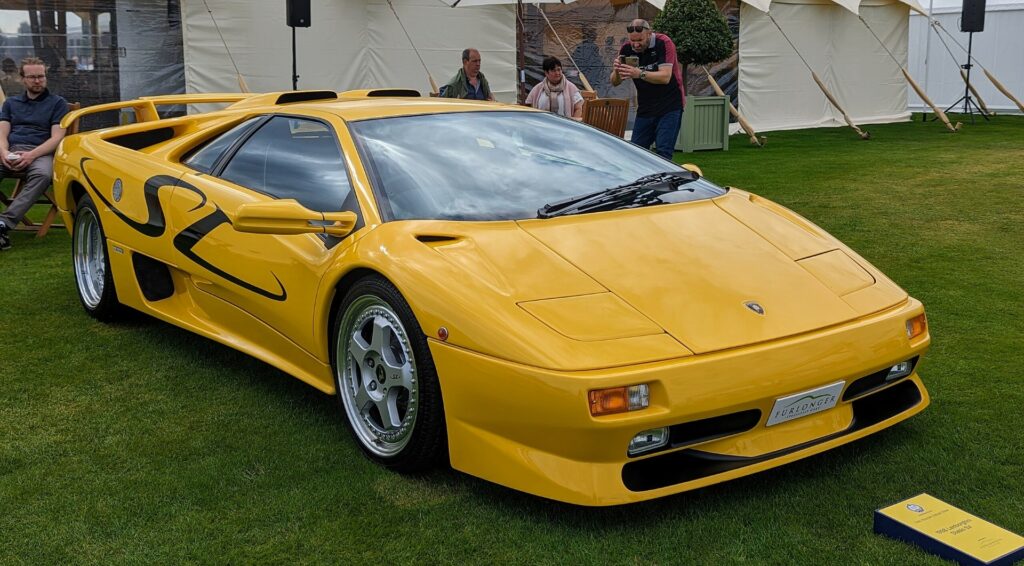
PRICING (UK)
1991 5.5-LITRE V12:
FAIR: £110,000
GOOD: £132,000
EXCELLENT: £152,000
CONCOURS: £179,000
1998 SV 5.7-LITRE V12 COUPÉ:
FAIR: £138,000
GOOD: £172,000
EXCELLENT: £198,000
CONCOURS: £238,000
